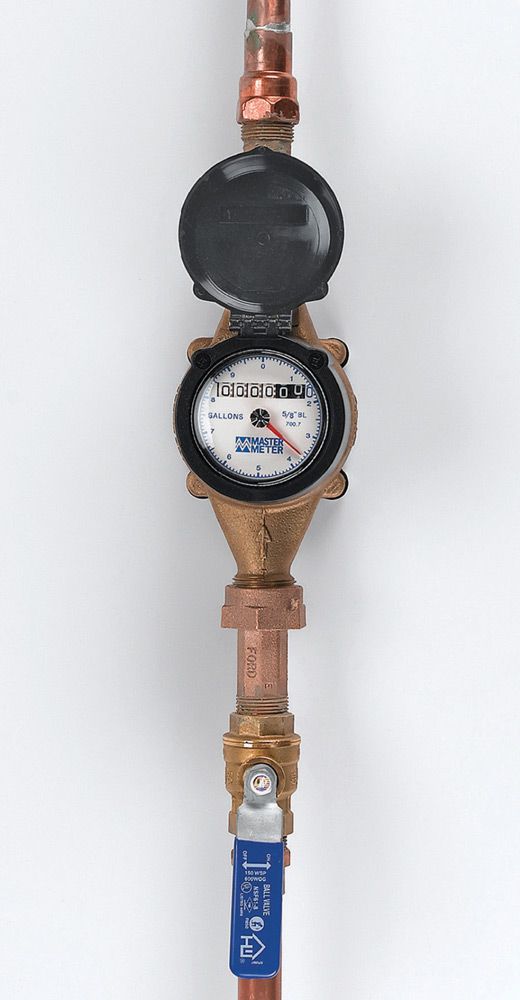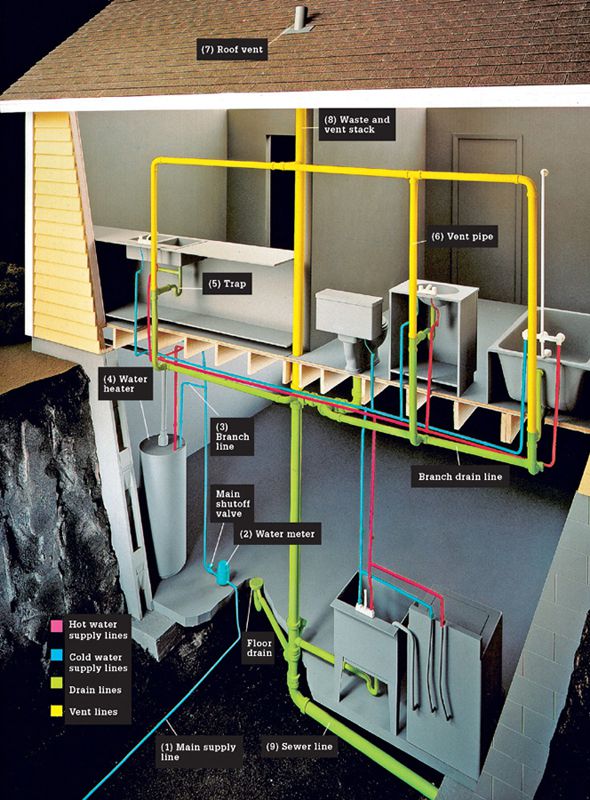PLUMBING
PLUMBING: BASICS
Because most of a plumbing system is hidden inside walls and floors, it may seem to be a complex maze of pipes and fittings. But spend a few minutes with us and you’ll gain a basic understanding of your system. Understanding how home plumbing works is an important first step toward doing routine maintenance and money-saving repairs.
A typical home plumbing system includes three basic parts: a water supply system, a fixture and appliance set, and a drain system. These three parts can be seen clearly in the photograph of the cut-away house on the opposite page.
Fresh water enters a home through a main supply line (1). This fresh water source is provided by either a municipal water company or a private underground well. If the source is a municipal supplier, the water passes through a meter (2) that registers the amount of water used. A family of four uses about 400 gallons of water each day.
Immediately after the main supply enters the house, a branch line splits off (3) and is joined to a water heater (4). From the water heater, a hot water line runs parallel to the cold water line to bring the water supply to fixtures and appliances throughout the house. Fixtures include sinks, bathtubs, showers, and laundry tubs. Appliances include water heaters, dishwashers, clothes washers, and water softeners. Toilets and exterior sillcocks are examples of fixtures that require only a cold water line.
The water supply to fixtures and appliances is controlled with faucets and valves. Faucets and valves have moving parts and seals that eventually may wear out or break, but they are easily repaired or replaced.
Waste water then enters the drain system. It first must flow past a drain trap (5), a U-shaped piece of pipe that holds standing water and prevents sewer gases from entering the home. Every fixture must have a drain trap.
The drain system works entirely by gravity, allowing waste water to flow downhill through a series of large-diameter pipes. These drain pipes are attached to a system of vent pipes. Vent pipes (6) bring fresh air to the drain system, preventing suction that would slow or stop drain water from flowing freely. Vent pipes usually exit the house at a roof vent (7).
All waste water eventually reaches a main waste and vent stack (8). The main stack curves to become a sewer line (9) that exits the house near the foundation. In a municipal system, this sewer line joins a main sewer line located near the street. Where sewer service is not available, waste water empties into a septic system.
Water meters and main shutoff valves are located where the main water supply pipe enters the house. The water meter is the property of your local municipal water company. If the water meter leaks, or if you suspect it is not functioning properly, call your water company for repairs.

